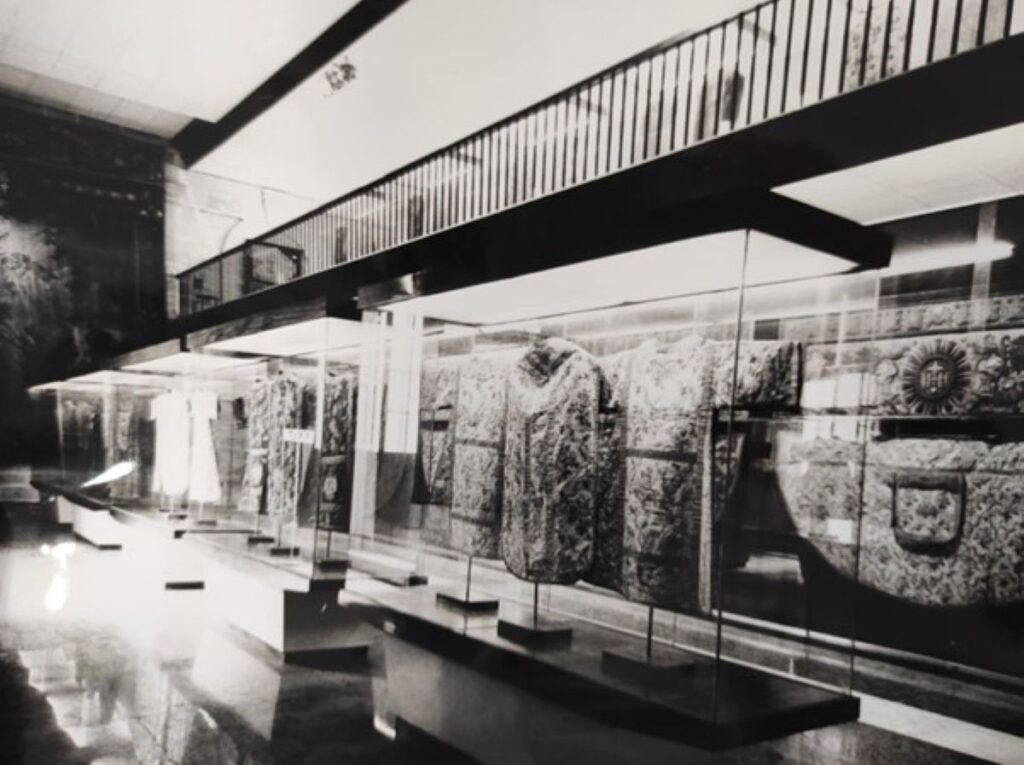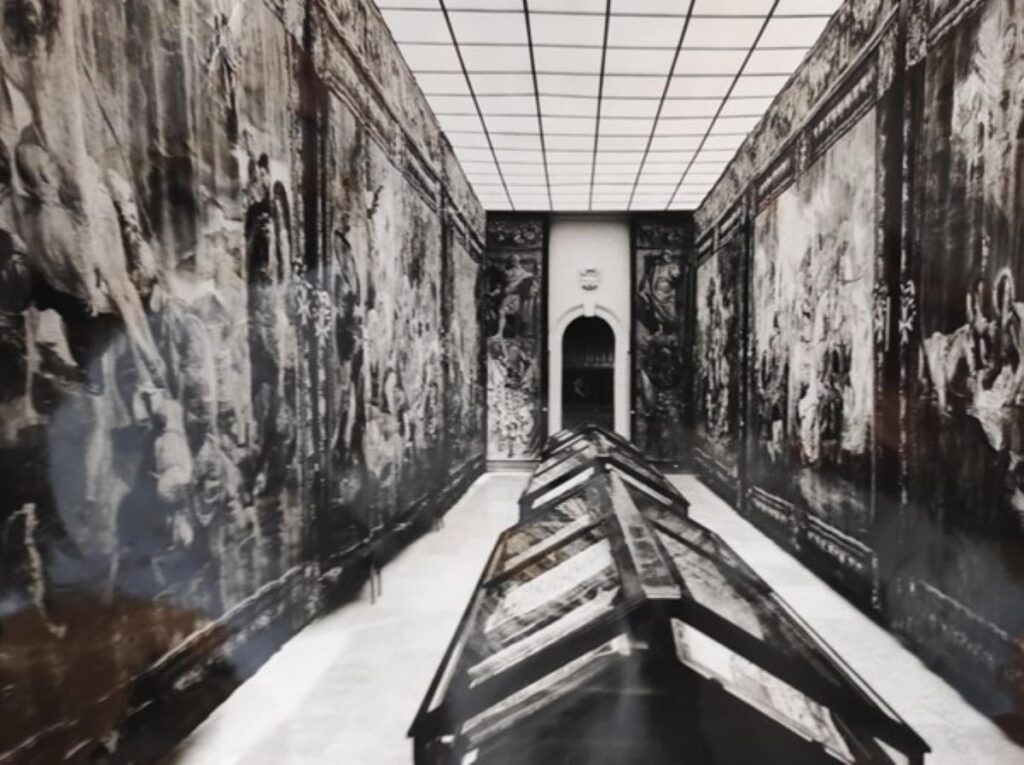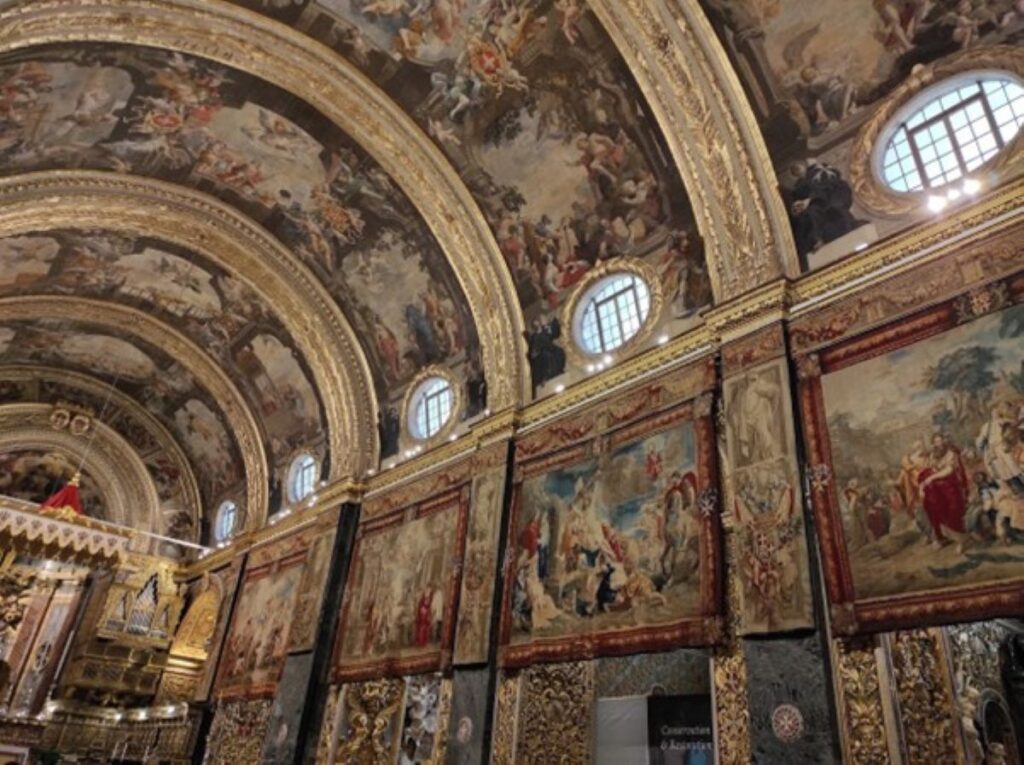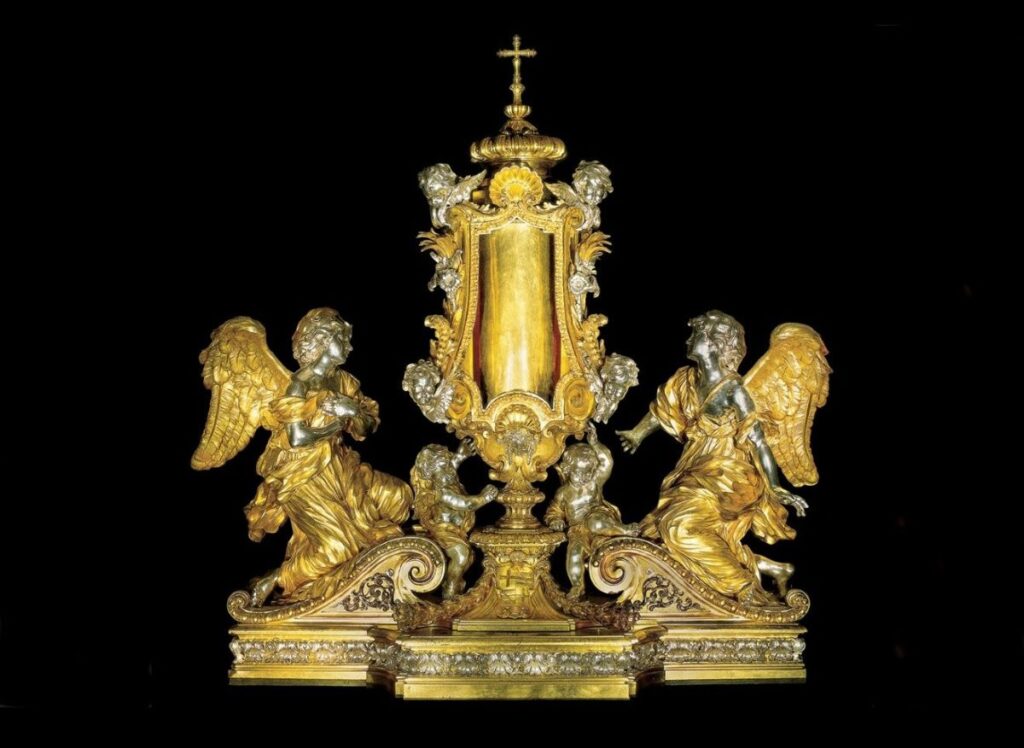St John’s Museum was one of Malta’s first purposely-built museums. Attached to the world-renowned baroque node of St John’s Co-Cathedral, the museum housed a collection, mostly ecclesiastical, that was accrued over the centuries by the Knights of St John.
The museum was inaugurated in 1965. It was the brainchild of Mgr Edward Coleiro and the architecture was overseen by the firm Mortimer and Degiorgio. Its opening came in an interesting, volatile period in Maltese history and, much like its modern, perpetually-under-construction heir, it was never far from controversy.
1965 was a period of great, anxious change for Malta. The previous year, 1964, marked Malta’s independence from the British Empire. The British military bases supplied one-third of Malta’s income and employed one-sixth of the labour force. A new economic identity had to be established for newly-independent Malta.
Tourism was, of course, to play the leading role. The Maltese government invested heavily in the industry; tourist arrivals went from 20,000 in 1960 to over 300,000 by 1975. Museums like St John’s would have an important role to play in the country’s new destiny.
The 1960s did not just bring Malta its independence, it also brought the politico-religious crisis. The museum was founded in these volatile times of conflict between Church and the Malta Labour Party, and, given St John’s Co-Cathedral’s unique history, the cathedral and the museum were at the forefront of these clashes, given the ownership battles that have haunted the cathedral since the departure of the Knights of St John in 1798.
The architecture of the museum was mostly conservative: Mortimer and Degiorgio opted for a respectful facade that harmonises with the architecture of the co-cathedral. The decision to introduce three arches at the museum’s facade facing onto Merchant Street was relatively bold and modern, given the density of intense baroque facades that dominate Valletta’s streetscapes.

Interior displays were modern for the time, especially the cases that displayed the cathedral’s collection of liturgical vestments. At times it was also cluttered, like the Tapestry Halls, which also included choral books and the exquisite St Jerome by Caravaggio.
Looking at some old photos of these halls makes one think of old Maltese houses full of glorious clutter, no space left empty (all that’s missing are the plastic-covered sofas).

Among the first and most recurring controversies was the display of the impressive Flemish tapestry collection, a ‘goia’ of Grand Master Ramon Perellos.
The tapestries were displayed without any casing, meaning visitors’ breaths and contact was detrimental to their fragile condition, added to the fact that every June they were removed to the co-cathedral for the feast of St John the Baptist. Thus every year, the tapestries had to be rolled up, carried past narrow doors, oftentimes bent at 90 degrees, then hung on the narrow cornices by a single employee brave enough to climb the cathedral’s dizzying heights, all to the continued detriment of these precious artefacts.
This led to frequent disputes between the government and ecclesiastical authorities as to the proper means of display of the tapestries.

Further controversy stalked the museum when, in 1984, the St Jerome painting, a masterful work by Caravaggio, was stolen. The theft has recently been dramatised in the film The Theft of Caravaggio, written and directed by Joshua Cassar Gaspar.
The painting was stolen while only one custodian was present in an adjacent room. The thieves, disguised as workers, cut the painting out of its frame and smuggled it out of the museum.
After a long negotiation process, wonderfully retold in Fr Marius Zerafa’s Caravaggio Diaries, the painting was retrieved in 1987, one of Malta’s most politically-contested years in its modern history.

The new museum project, which was launched in 2013, is the latest string of controversies for a site that is the repository of such transcendent works of art as Ciro Ferri’s Reliquary of the Hand of St John the Baptist and the unique work of ephemeral art, Romano Carapecchia’s Capella Ardente.
The museum’s long gestation period, as well as the construction of a new concrete hall to house the Flemish tapestries and the interventions in the Bartolott Crypt, have tragically monopolised the headlines. These controversies have caused upset among art historians and heritage watchdogs due to their interventions with the infrastructure (particularly the by-now infamous window) of the oratory that displays Caravaggio’s Beheading of St John the Baptist and the interventions to the Bartolott Crypt’s floor.

However, beyond the thefts, political tensions and delays, St John’s Museum and its contents retain an important place in Malta’s museological and artistic history.
All of Malta, and indeed the art world, will benefit when the artistic beauty once more emerges from the beast of controversy.










